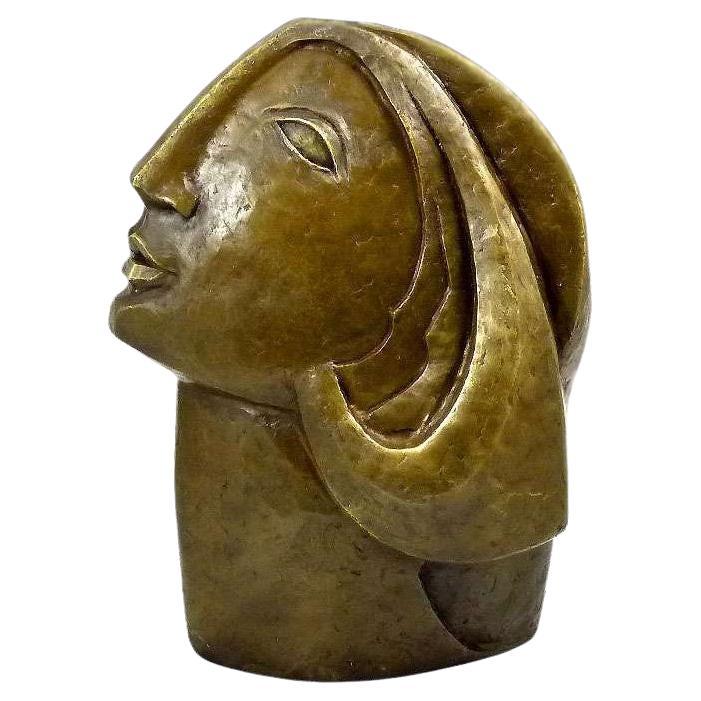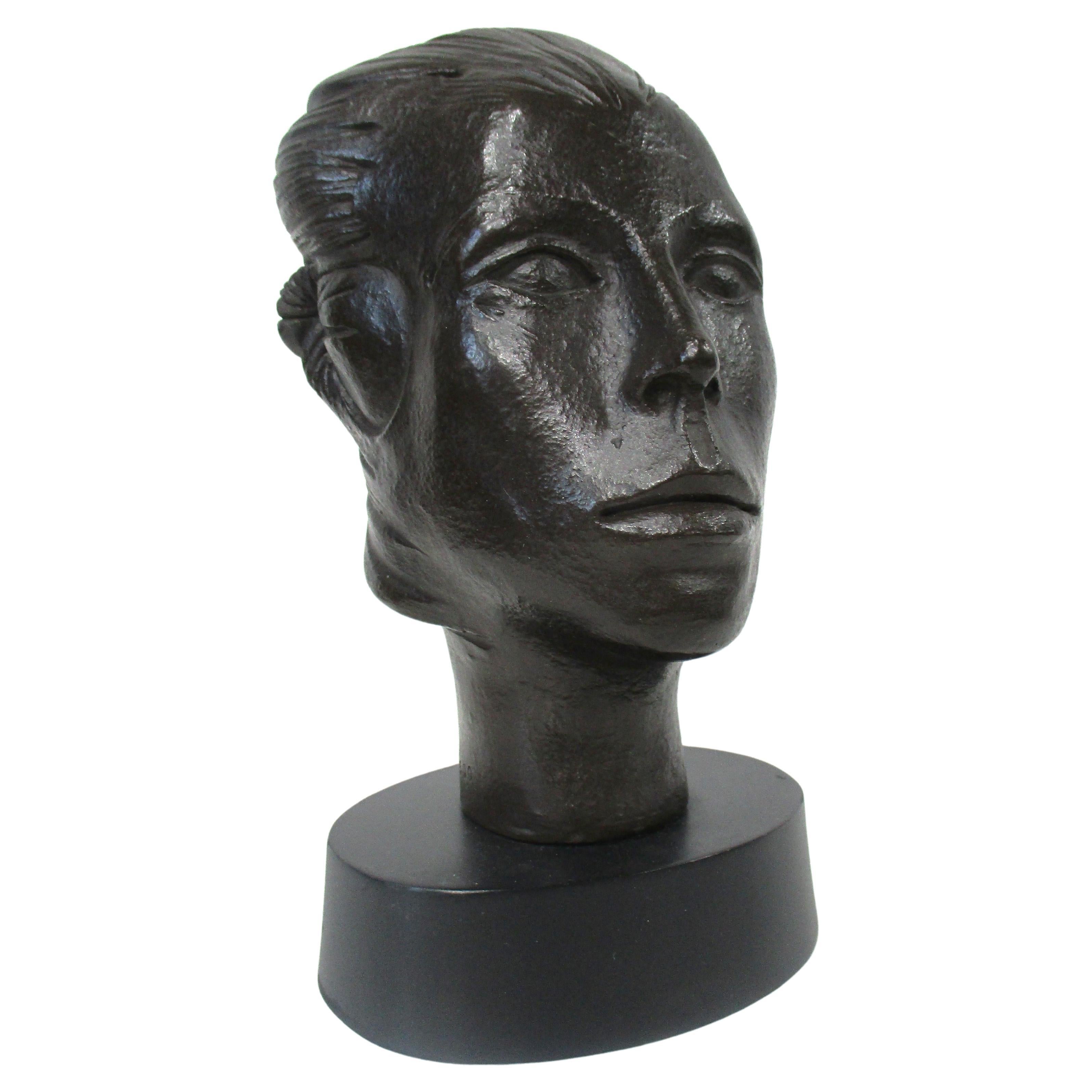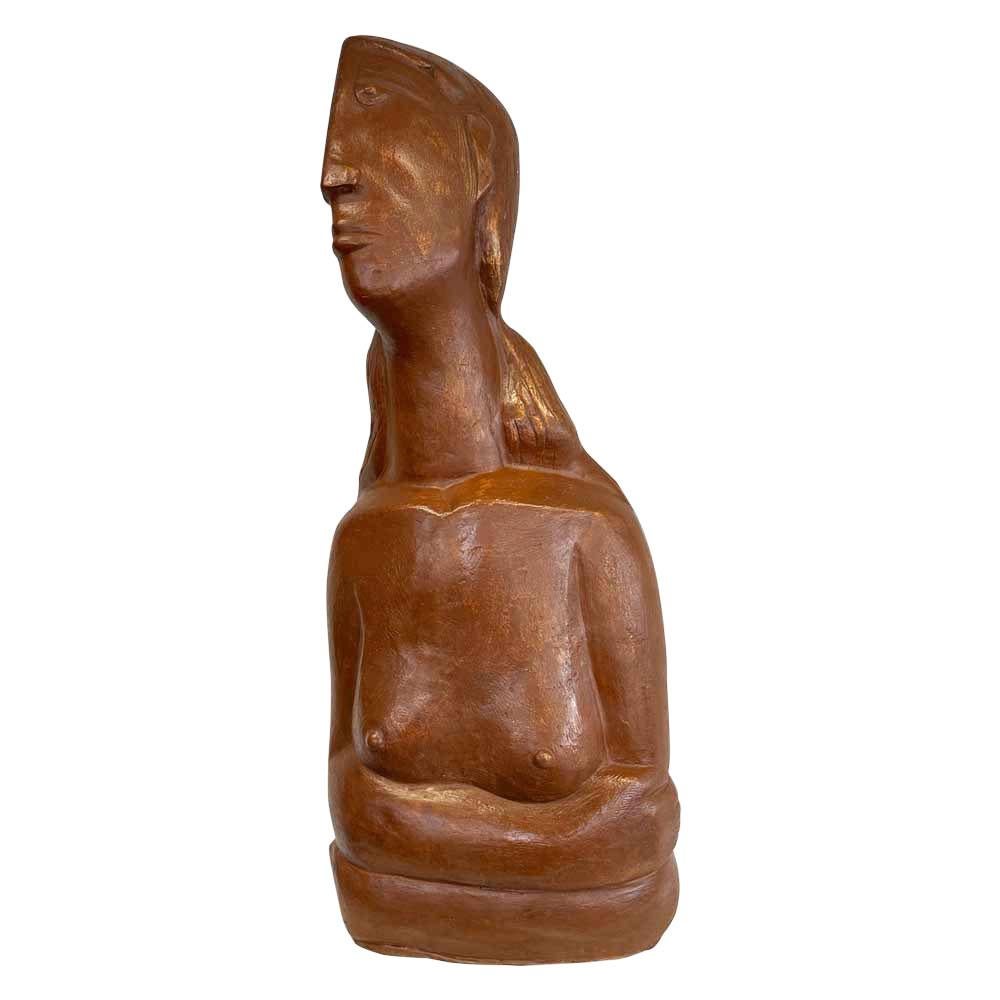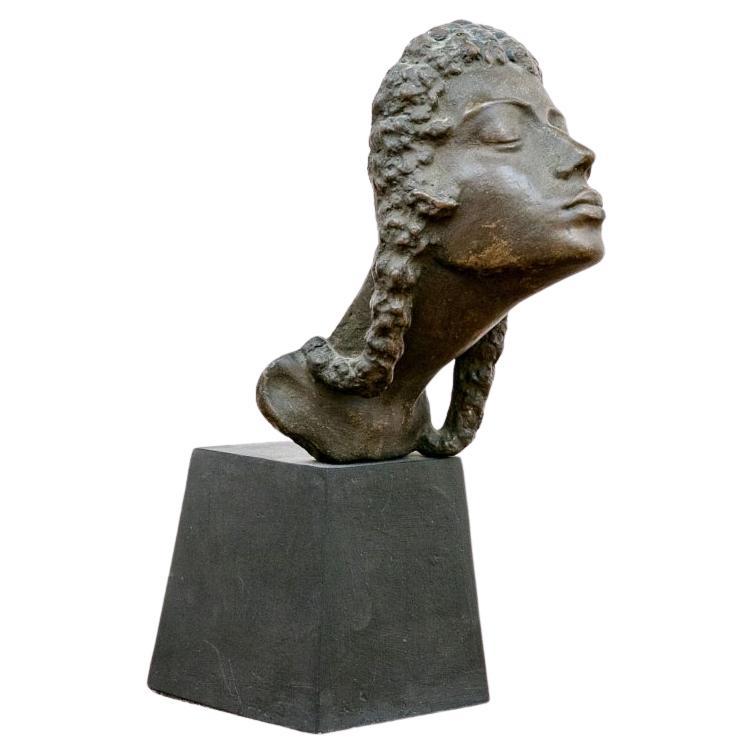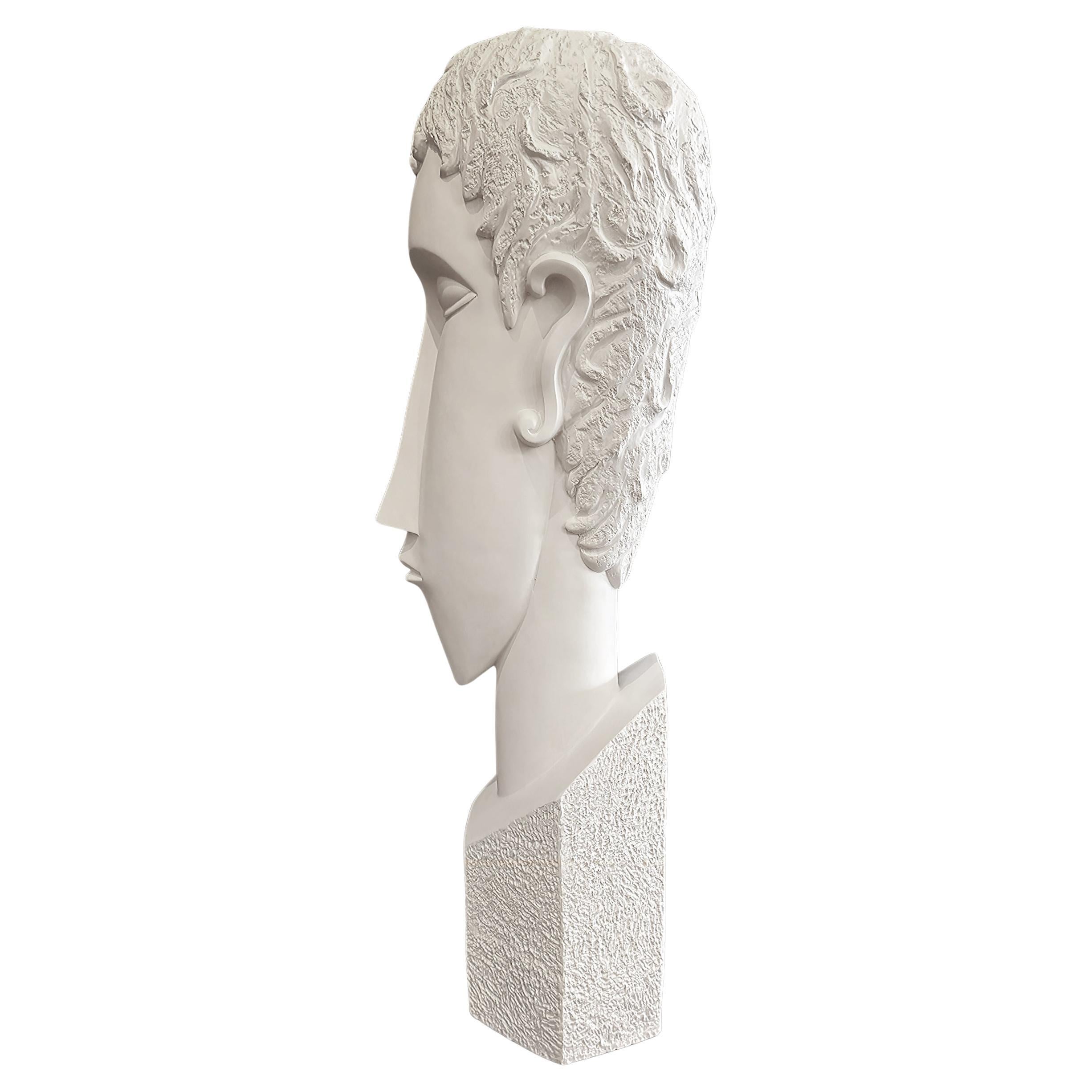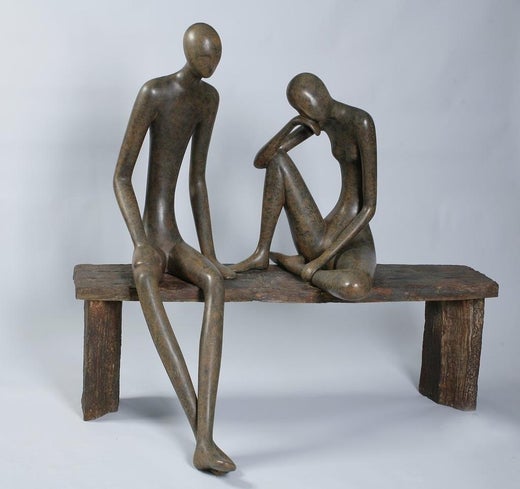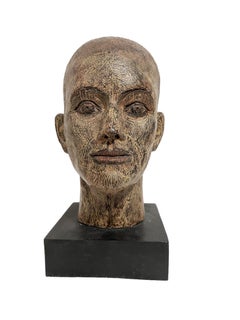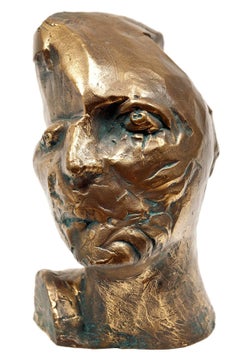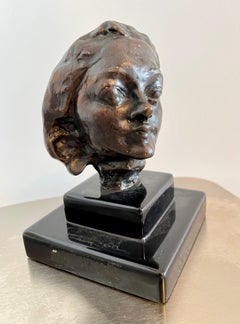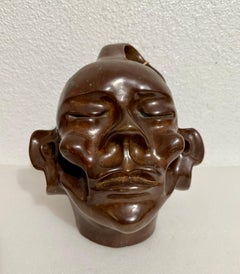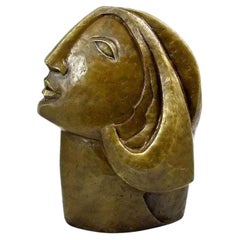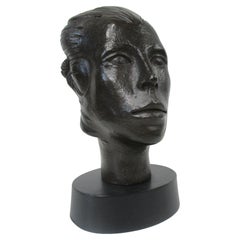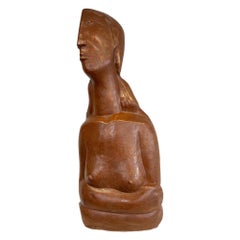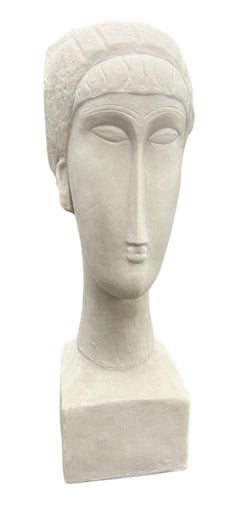Ruth Bloch (b. 1951)
Head of a woman (After Modigliani)
Bronze with patina
Edition: 3/9
Hand etched signature and edition near base: R Bloch
(titled by the artist as "Inspired by Modigliani")
Ruth Bloch was born in Israel in 1951 to artist parents. Her father was a musician, while her mother worked in ceramics, Ruth's family were members of a Kibbutz called Alonim, a place where childhood and early youth afforded her many opportunities to develop her artistic talents. Reaching adulthood, Ruth attended the Avni Art Institute in Tel Aviv, and took additional studies in psychology in the United States. Her father, a musician and her mother, an artist, both escaped the Holocaust in Europe. Ruth grew up in a kibbutz where the community cared for the children and everyone worked to survive and build the very young nation. Ruth Bloch is one of the leading Israeli artists with worldwide collectors looking for her works as they understand the artistic value of these works. As a contemporary figurative sculptor, Bloch most closely relates to Modernist Henry Moore for his fluidity of line and his genius for making that which is massive, delicate. Her work entitled, “Fatherhood”, which blends the human forms in an eternal circle, echoes Moore’s ability to realize the full potential of the sculptural form. However Bloch, unlike her predecessor allows no separation between man, woman and child. For her these figures are one, locked in an unending circle of life. The influence of the Italian Master, Alberto Giacometti is also apparent in Ruth Bloch’s art. The stylized elongated figures and the highly textural patinas that characterize her work in bronze are reminiscent of the slender forms of Giacometti’s artistic universe.
Ruth Bloch 's growth as a sculptor is far easier to trace than her influences. As a figurative sculptor in the modernism vein, Bloch most closely relates to Henry Moore for his fluidity of line and his genius for making that which is massive delicate. Her work entitled "Fatherhood, " which blends the human forms in an eternal circle, echoes Moore 's ability to realize the full potential of the sculptural form. In its scale and weight, the monumental piece "Eternite is reminiscent of Moore 's "Northampton Madonna" (1943/4). However Bloch, unlike her predecessor allows no separation between man, woman and child. For these figures are one, locked in an unending circle of life.
The influence of the Italian master Alberto Giacometti is also apparent in Ruth Bloch 's art. The stylized elongated figures and the highly textural sculpture patinas that characterize her work in bronze are reminiscent of the slender forms of Giacometti 's artistic universe. The rebellious attitude of the celebrated Surrealist is adopted by Bloch who risks dismissal by crossing the age-old intellectual taboo of combining form and function; art and crafts. Ruth Bloch accepts this risk willingly. She finds great joy in creating and marvels at the public 's voracious response.
There is something sublime about the serious artist creating practical art. On viewing Bloch 's colorful bowls atop bronze trees, magical figures reading books or the simple gesture of lifting a child to the heavens, one immediately recollects the spirit of Pablo Picasso at Vallauris. The often dark Picasso was at his most whimsical, even poignant when working his ceramics, embellishing bowls, plates, jugs and wine decanters with images of doves, fish and owls. Bloch began creating functional art with a series of bronze bowls and coffee tables. Today, she has expanded her visual vocabulary/repertoire with unique glass works. In the relatively short time that she has worked in hybrid media, we have witnessed a startlingly rapid development that fulfills the promise of Bloch; she is growing with each work. (Philip Allen, San Francisco, 2001)
Currently Ruth Bloch lives and sculpts in Israel. Her work exhibits a great depth of feeling for the human figure, revealing the living unity of her masculine and feminine forces. Her works are exhibited all over the world. From an article by Andrew McDonnell, With her flights and forms, the viewer can make out resemblances-as to the early Hans Jean Arp, or Henri Matisse, and even Marc Chagall. In sculpture specifically, Bloch's sweeps and seized embraces come like less abstract reprise of the likes of Brancusi, with humane sway and animation in concrete flight. Arching and tensile for its cast: perhaps again Hans Arp or Henry Moore
Ruth Bloch’s growth as sculptor is far easier to trace than her influences. Ruth Bloch’s works are exhibited throughout the world in both public and private collections.
International Fine Art Show and Sale Genesis Hebrew Center, Tuckahoe, NY, USA
Artists: Zahara Rubin, Omri Amrany, Aharon Bezalel, Ruth Bloch, Ziporah Weiss, Gaia Silber.
David Gallery, Jerusalem. Artists: Menes, Eve Eyal, Malka Ben Neria, Orna Berlinski, Tova Gilhar, Dalia Yehudayan, Shlomo Singer, Curt Yannay, Beba Toledano, Dina Rubenstein Rotman, Gretty Bezalel, Aharon Bloch, Ruth Faran, Nomi Fink, Bernie Katz, Michael Mande’el, Avraham Szilo, Richard Wachsstock Schonfeld, Betty
Opening of the Topor Sculpture Garden, Ramat Gan
Artists: Brown, Igor Ben Zvi, Roni Gelber, Ilan Dudu Gerstein, David Peer, David Rotem, Varda Lachman, Zvi Averbuch, Shlomit Afek, Yoram Bareket, Yael Ghivoly, Varda Givati, Reuben Merhav, Dina Peled, Rafi Cohen Caspi, Mirit Ruth Block, Miron, Yigal Fine, David Feldman, Dorit Jano, Jacques Benny Levy.
Art Miami 2023 Corridor Contemporary קאופמן 12, תל אביב
Artists: Ilan Baruch, Ilan Ruth Bloch, Iddo Markus, Shay Kun.
2025, Please Open Your Eyes, Dvir Gallery, Tel Aviv.
Artists: Barbara Cole, Ilit Azoulay, Kaoruko, Liron Kroll, Papaya Spray, Ruth Bloch, Tal Frank, Tal Shochat, Tali Amitai Tabib, Tara Donovan, Vered Aharonovitch, Yael Shachar.
